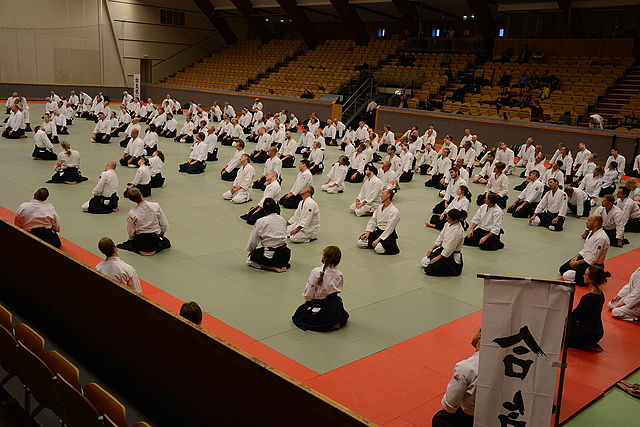A lot of people know that Aikido is a Japanese martial art. But did you that the strength of Aikido comes from your opponent. Here below are ten things you maybe should know about Aikido.
Aikido: Definition
The word Aikido translates to three characters in Japanese 合氣道 and means ”the way of harmonising energy.”
The Power of Aikido
The strength of Aikido comes from using your opponent’s power to throw or pin down with as little effort as possible. The principle of Aikido is to seek creative alternatives to conflicts, both verbal and physical.
The Founder of Aikido – Ōsensei
Morihei Ueshiba created Aikido and he is often referred to as Ōsensei (Great Teacher). Aikido primarily developed during the late 1920s and carried on throughout the 1930s, with the help of older martial arts that he had studied. In the 1950s, Aikido made it overseas and more specifically in France. Aikido is based on Ueshiba’s personal life, martial arts experience, and personal religious beliefs. When he died in 1969 his son took his throne as the head of Aikido.
Aikidōgi
Aikidōgi is the uniform students wear to practise. It consists of a pair of loose-fitting trousers and a wraparound jacket. The official Aikido shirt is white and the sleeves reach to just below the elbows.
Hakama
Hakama is traditional Japanese clothing. It is a type of trousers which was originally worn by the samurai. A Hakama is tied to the waist and goes all the way down to the ankles. The design is meant to hide leg movement from opponents. Hakama is normally reserved for practitioners with ”dan” rank or Senseis, although others allow everyone to wear Hakama regardless of rank.
Before Every Practice
Before every practice, students bow to their Sensei (trainer) and say ”one gaishimasu”. This is a question that the student asks the Sensei and what they are asking is for the Sensei to teach them the art of Aikido. You are also supposed to bow down when ending classes and when practising techniques with a partner.
Aikido Ranks
Aikido practitioners progress by promotion through a series of grades which are ”kyu” and ”dan”. Normally aikido organisations use belts to distinguish grades. Depending on which organisation you train at, the colours of the belts differ. In some organisations, the belts could be as simple as white and black to distinguish lower and higher ranks, while others use various belt colours.
Weapons
Aikido weapon training traditionally includes a wooden sword, a knife, and also a short staff. With the help of these weapons, they learn and train on how to disarm their opponents that are carrying weapons.
Mental Training
Aikido training is physically demanding as well as mentally demanding, emphasising the ability to relax the body and mind even during stressful and dangerous situations. Morihei Ueshiba once said, ”you must be willing to receive 99% of an opponent’s attack and stare death in the face” in order to execute your techniques without hesitation.
Biggest Organisation
The largest Aikido organisation is the Aikikai Foundation which is run by Morihei Ueshiba’s family. Other, and different, types of aikido were eventually formed by his students.
Lyssna på det senaste avsnittet av Fighterpodden!



Kommentarer